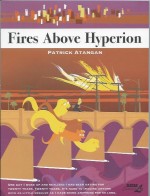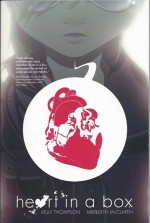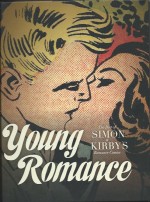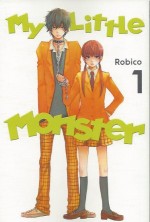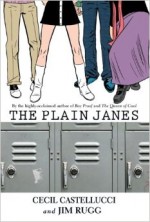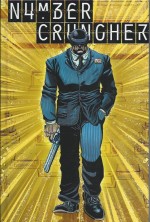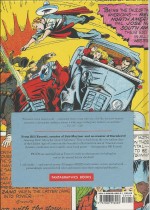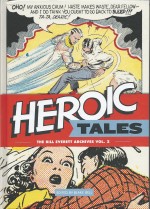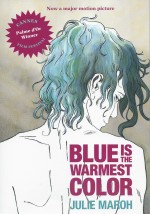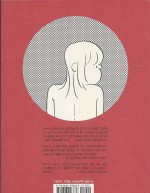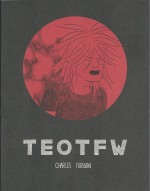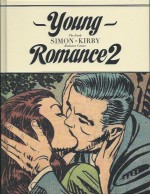
By Joe Simon & Jack Kirby,restored by Chris Fama & edited by Michael Gagné (Fantagraphics Books)
ISBN: 978-1-60699-732-1
As the popularity of flamboyant escapist superheroes waned after World War II, newer yet more familiar genres such as Crime and Horror came to the fore in American comics, as audiences increasingly rejected upbeat fantasy for grittier, more sober older themes in mass entertainment.
Some, like Westerns and Funny Animal comics, hardly changed at all, but gangster and detective tales were utterly radicalised by the temperament of the post-war world.
Stark, uncompromising, cynically ironic novels and socially aware, mature-themed B-movies that would become categorised as Film Noir offered the new civilian society a bleakly antiheroic worldview that often hit too close to home and set fearful, repressive, middleclass parent groups and political ideologues howling for blood.
Naturally the new forms and sensibilities seeped into comics, transforming good-natured, two-fisted gumshoe and Thud-&-Blunder cop strips of yore into darkly beguiling, even frightening tales of seductive dames, big pay-offs and glamorous thugs.
Sensing imminent Armageddon, the moral junkyard dogs bayed even louder as they saw their precious children’s minds under seditious attack…
Concurrent to the demise of masked mystery-men, industry giants Joe Simon & Jack Kirby – who were already capitalising on the True Crime boom – famously invented the comicbook Romance genre with mature, beguiling, explosively contemporary social dramas that equally focussed on the changing cultural scene and adult-themed relationships. They also, with very little shading, discussed topics of a sexual nature…
Beginning with the semi-comedic prototype My Date for Hillman in early 1947, S & K plunged in full force with Young Romance #1 in September of that year for Crestwood Publications: a minor outfit that had been creating interesting but not innovative comics since 1940 as Prize Comics.
Here, however, following Simon’s plan to make a new market out of the grievously uncatered-for older girls of America, they struck gold with stories addressing the serious issues and hazards of relationships…
Simon & Kirby presaged and ushered in the first American age of mature comics – not only with the creation of the Romance genre, but with challenging modern tales of real people in extraordinary situations – before seeing it all disappear again in less than eight years. Their small stable of magazines produced for the loose association of companies known as Prize/Crestwood/Pines blossomed and wilted as the industry contracted throughout the 1950s.
Not since the invention of Superman had a single comicbook generated such a frantic rush of imitation and flagrant cashing-in. Young Romance #1 was a monumental hit and the team swiftly expanded: releasing spin-offs Young Love (February 1949), Young Brides and In Love under a unique profits-sharing deal that quickly paid huge dividends to the creators and their growing studio of specialists as well as the publisher.
All through that turbulent period comicbooks suffered impossibly biased oversight and hostile scrutiny from hidebound and panicked old guard institutions such as church groups, media outlets and ambitious politicians.
A number of tales and titles garnered especial notoriety from those social doomsmiths and when the industry buckled and introduced a ferocious Comics Code, it castrated the creative form just when it most needed boldness and imagination. Comics endured more than a decade and a half of savagely doctrinaire self-imposed censorship until changing society and plummeting profits forced the art form to adapt, evolve or die.
Those tales from a simpler time, exposing a society in meltdown and suffering cultural PTSD, are mild by modern standards of behaviour but the quality of art and writing make those pivotal years a creative highpoint long overdue for a thorough reassessment.
In 2012 Fantagraphics released Young Romance: the Best of Simon & Kirby’s Romance Comics and that superb compilation, unable to do justice to the sheer volume of breakthrough material, has happily spawned this magnificent sequel, dedicated to the master creators’ first bold experiments with their astonishingly adult new genre.
Fictionalising “True Crime Cases†was tremendously popular at the time, and of the assorted outfits that generated such material nobody did it better than S&K. That technique of first-person confession also naturally lent itself to the just-as-hard-hitting personal sagas of a succession of archetypal women and girls who populated their new comicbook smash.
Although their output as interchangeable writers/pencillers/inkers (possibly aided by Joe’s brother-in-law Jack Oleck in the story department) was prodigious and astounding, other hands frequently pitched in, so although these tales are all credited to S & K, art-aficionados shouldn’t be surprised to detect traces of Bill Draut, Mort Meskin, Al Eadeh, George Roussos or other stalwarts lurking in the backgrounds…
‘Introduction: A New Comic Book Genre Begins’ by Bill Schelly scrupulously traces the trajectory of the innovation and its impact on the industry before the shocking revelations begin with ‘I was a Pick-Up!’ from Young Romance #1 (September/October1947).
Here discontented teenager Toni Benson relates the circumstances that led to her being dumped by a sleazy rich kid in an underworld dive and of the sullied knight who saved her from a nasty end, whilst from the same issue ‘Misguided Heart’detailed how factory worker June Collins was slowly seduced by sleazy owner’s son Karl Barton until shy, self-effacing blue-collar Sherman could stand it no longer…
Story length varied from seven to fifteen pages and ‘Marriage Contract!’(YR #3, January/February 1948) took a gloriously expansive time to detail how destitute but proud slum-dweller Kitty Burke escaped parental pressure if not poverty by refusing to wed the career criminal her dad brokered for her, eventually finding happiness with a decent man prepared to honestly work his way to success, whilst the 8-page ‘Her Best Friend’s Sweetheart!’from the same issuetook a more light-hearted tone to detail how a soldier’s buddy sneakily put the moves on the girl he was supposed to be watching over…
Young Romance #4 revealed how excessively hard to please Nancy Hunter finally and painfully learned she would never find true love by only being a ‘Blind Date!’after which a brace of yarns from Young Romance #5 (May/June 1948) begins with ‘I Fell in Love With My Star Pupil!’:a fascinating study in small-town prejudice which found newly qualified teacher Mary Temple slandered, shunned and censured by petty, dirty minds in rural Pinesville when she began teaching an illiterate full-grown man the knowledge he needed to better himself. ‘Gold Digger’thensaw spoiled, avaricious Rusty Taylor taken down a peg or two when the boys she’d been exploiting brought in a ringer to teach her a much-needed lesson…
Simon & Kirby took much of their tone if not content from the movie melodramas of the period such as Smash-Up; the Story of a Woman or Johnny Belinda and Noir romances like Blonde Ice or Hollow Triumph and, unlike what we might consider suitable for romantic fiction today, their comicbook stories crackled with tension, embraced violent action and oozed unsavoury characters and vicious backstabbing, gossiping hypocrites.
‘Disgrace!’in #6 featured coal miner’s daughter Katie Markos who despised the raw brutal violence of boxing which offered her brother his only escape from poverty, but she was horrified at the relentless attraction she felt for his next opponent “Killer†Grant…
The creators were not afraid of complex plots either. ‘War Bride’,the first of two selections from Young Romance #7 (September/October 1948), saw French miss Janine Arday brought to America to marry her man, only to see him die on the docks as she debarked.
Stuck without a man to guarantee her citizenship, she desperately accepted a pre-proposal from wealthy French émigré Aristide Renault but after moving onto his estate found herself increasingly attracted to freewheeling idler Tony, son of the housekeeper Mrs. Cummings.
This tale would be considered mature even by today’s sophisticated standards…
The second tale reversed the standard format as male confessor Frank Craig revealed ‘I Stole for Love!’and catalogued the foolish thoughts which forced him to embezzle funds for a devoted bride who only wanted him, not useless trinkets…
A couple from Young Romance #8 lead with ‘Love or Pity’wherein eager bride-to-be Ginny Harlan finds her perfect life destroyed by vicious gossip when her brother is erroneously implicated in mail fraud. Happily her man Ken is a decent straight shooter…
By contrast ‘Love Can Strike So Suddenly’offers a lavish exotic adventure wherein manipulative, ambitious Evie injects herself as a chaperone into her older sister’s life: accompanying the serious Ann on a business trip to India organised by dreamy tycoon Warren Wright.
The kid’s aplomb and composure swiftly dissipate once she meets the unflappable pilot/guide Bascomb Fuller who preferred the moody soubriquet “Deadeyeâ€â€¦
‘Was Love to be My Sacrifice!’ from Young Romance #9 (January/February 1949) took a hard look at careers as Chris Lorraine increasingly rebelled at being one half of a sister-act – the part that wanted nothing to do with her mother’s ruthless dream of stardom by proxy. Despondent, frustrated Chris was far more interested in marriage to their long-suffering agent Sam…
With Young Romance a runaway success, the first spin-off debuted in February 1949 and from Young Love #1 comes the complex and intriguing ‘The Man I Loved Was a Woman-Hater’wherein vacationing Karen Nelson was saved from drowning by a reclusive artist who promptly ignored her thereafter. Unable to leave well enough alone she soon discovered a manipulative vixen who still had a ferocious financial and moral hold upon the surly but magnificent Pete Lewis…
Young Romance #10 (March/April 1949) provides two more challenging melodramas beginning with ‘This Man I Loved was a Mama’s Boy!’as Julie Decker finally meets her prospective mother-in law and realises how completely under her thumb brilliant young doctor Orin Fleming truly is.
It takes a deadly family joyride with her wild, juvenile delinquent brother-in-law-to-be before everybody is horrifyingly shaken out of their cloying, smothered roles…
‘Unwanted!’meanwhile focuses on a young girl fresh out of prison unwillingly drawn back towards her old life by controlling boyfriend and gangster Joe Crane.
When a well-meaning bank clerk steps in to save her, the bandit plans a savage revenge…
This sublime ride back to a time of hungry hearts and dark desires ends with ‘Too Wise for Romance!’from Young Love #2 wherein a star-struck but luckless performer descends into a tawdry life as a bar-hostess and taxi-dancer, blithely unaware that the boy she casually spurned has never forgotten her…
Augmenting this parade of earthy fantasy is a beguiling feature ‘About the Restoration’ needed to compile this full-colour wonder and ‘Biographies’ of the canny creatives involved.
This is an extremely engaging, strikingly powerful and thoroughly addictive collection of great stories by brilliant masters of the comics arts and one no lover of the medium should miss…
Young Romance 2 © 2014 Fantagraphics Books Inc. Introduction © 2014 Bill Schelly. Restored comics © 2014 Chris Fama. All rights reserved.
